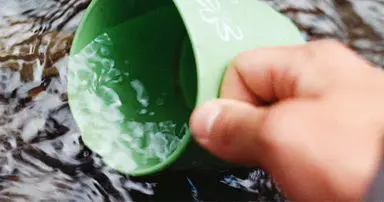[Jacob] With few exceptions, there aren’t underground lakes or rivers. Groundwater is contained in the pores of aquifers (think like sand). And water is extracted from these spaces between particles.
There are many types of aquifers. Some are more protected from what is happening at the land surface more than others. Depth of well matters too when it comes to contamination. Shallow wells are more likely to be contaminated. Deeper wells are less likely generally speaking. All of the groundwater starts as rain somewhere, falls on the land, goes through the soil, and deeper into the ground. The older the water (when it fell as rain) the more likely it is clean. There is groundwater that has taken 1000s of years get from where the rain fell to where it is now and there is ground water in shallow aquifers that only just arrived.
Geologic formations can contaminate wells too…
A lot can be learned from a test, but agrochemicals aren’t part of a normal well test. Usually it is fecal coliforms and nitrates or maybe heavy metals too.
River/lake water can be boiled or treated with bleach.
Groundwater or spring water is preferable as it is filtered by the soil and aquifer. This removes most/all bacteria.
[Tracey] Bleach and/or boiling is used to kill off the bugs in water that typically make people sick. Those treatments do nothing to treat for other potential contaminants in water (nitrates, fertilizers, pesticides, metals, PFAS, etc). Filtration is used to remove some of those contaminants.
























0 Comments